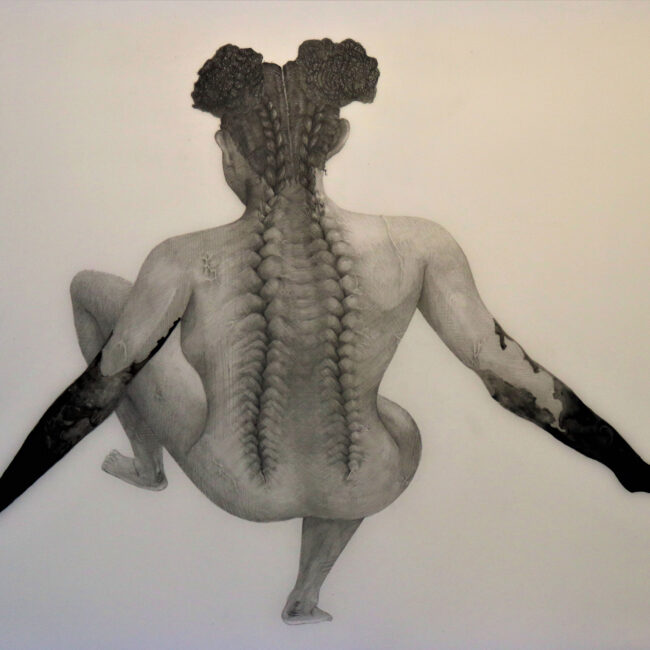Her artwork has been on display at The African Heritage Cultural Arts Center and The Art and Culture Center of Hollywood. Her work has been published in Gumbo Magazine Issue 001, the New York Times, The Biscayne Times and The Miami Times. She has attended art residencies at the Atlantic Center for the Arts and the Anderson Ranch Arts Center. As a 2018 recipient of the Betty Laird Perry Award, her work is part of The Betty Laird Perry Emerging Artist Collection at the Patricia & Philip Frost Art Museum. She is currently a resident artist of The Bakehouse Art Complex in Miami, Florida.
Rhea Leonard was selected for her work, “The Machinations of Self Love in the Age of Racial Violence,” highlighting the Black experience in America and the truth of discomfort, specifically highlighting the experiences and treatment of Black women. Facing away from the viewer, a young Black woman’s back can be seen gnarled and braided, transitioning neatly up into her braided hair. Skin peppered with scars, the two massive gashes in her back have been sealed; their presentation, while difficult to look at, is her way of living with the violence perpetrated upon her Black body.
The work explores the difficult, yet persistent position Black people, Black women more specifically, find themselves. “While the gashes on her back bring to mind the history of whipping and lashings of Black bodies, the use of the braided pattern to seal her wounds is familiar,” Leonard says and she elaborates on the work. “The use of a well-known pattern in Black culture, placed within the context of skin and scars, brings up the visual that many of us have sadly grown used to seeing: a Black body welted and marred by violence but in the process of healing. The work, like many of my other drawings poses a question to the viewer, ‘Just how comfortable are you witnessing Black pain?’”
“In a country where replaying instances of police brutality on the nightly news is a commonplace occurrence, my drawing pauses the moment and settles the viewer with a singular sight and moment to observe. There is no room for replay, for the image to grow distant or lose its meaning. The drawing sits as it is, and leaves the viewer to interrogate and contend with themselves just how much the sight before them is either: uncomfortable or disturbing or nothing much to consider at all.”





